In November 2024, HTL Africa Architecture firm unveiled its groundbreaking design in Lagos, Nigeria as a part of the “Generations” Exhibit at the 2024 EcoBank Design & Building Expo. This was facilitated and led by lead architect, James George. The pavilion is in homage to African architecture of the forefathers, using bamboo as its main material, reimagining a new way of building in a sustainable fashion.
A.S: What inspired you to focus on the bamboo scaffolding? As the central element for this event, for this showcase.
J.G: The reality of it is because we create sustainable architecture, we’re quite bothered about the issue of waste. We wanted to make a pavilion, so that even after its use had finished, it could still be used in other ways. That was the first part of our thinking. That evolved later to try to start to understand the material that we had once been called to use on a large scale.
We had been struggling in-house to create a 12 facade, with bamboo. It was a two way street. While we were also very worried about the issue of waste in sites and the reuse of materials and using very humble materials to make something that is extravagant on the one side as a concept, we were also trying to experiment to see how we could make bamboo have an elegant outlook for a building that is 12 stories as its facade. We were playing with those two ideas at the start.
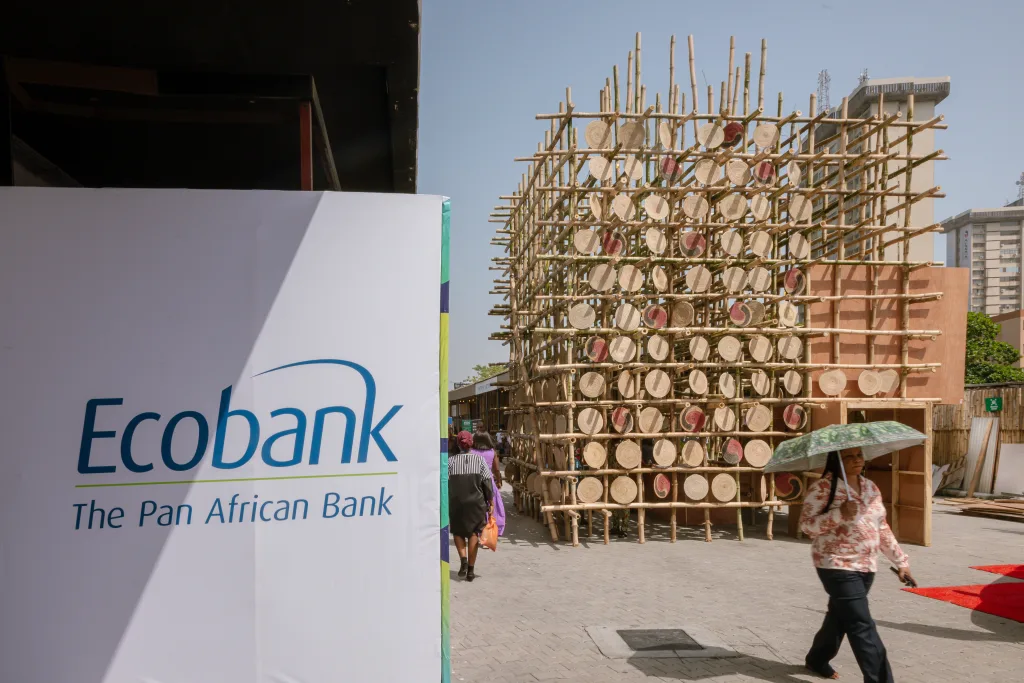
A.S: What techniques did you use to get that to look both elegant and humble and still functional?
J.G: Our traditional architecture is built of the most humble materials, and the traditional architecture is on two sides. Where I come from, the north of Nigeria, it’s more of a desert oriented architecture. It’s built in these pure shapes and forms, which is quite different from the south, which, because of the need for air, is built in another way. In the north, these kinds of sophisticated geometries are made with the most humble materials, which are things like mud and raffia.
In architectural history, art history, you find that when things are made from this kind of humble materials, they are often called primitive. There are several levels of design that our ancestors have made that while made of primitive-looking materials have a large amount of architectural sophistication.
That’s the kind of reasoning that we wanted to bring to bear with using a material that was humble in its origins. Cheap, and humble, transformed into something precious. That’s where the understanding of architecture comes into play. Also the understanding of trying to create something as precise as possible comes into play because once a thing is extremely precise, it starts to become precious.
No matter how humble the materials used to make it are, that precision and the care and love that is used to make that object transform it from what should be a primitive object into something more elegant. So that was the strategy in that regard.
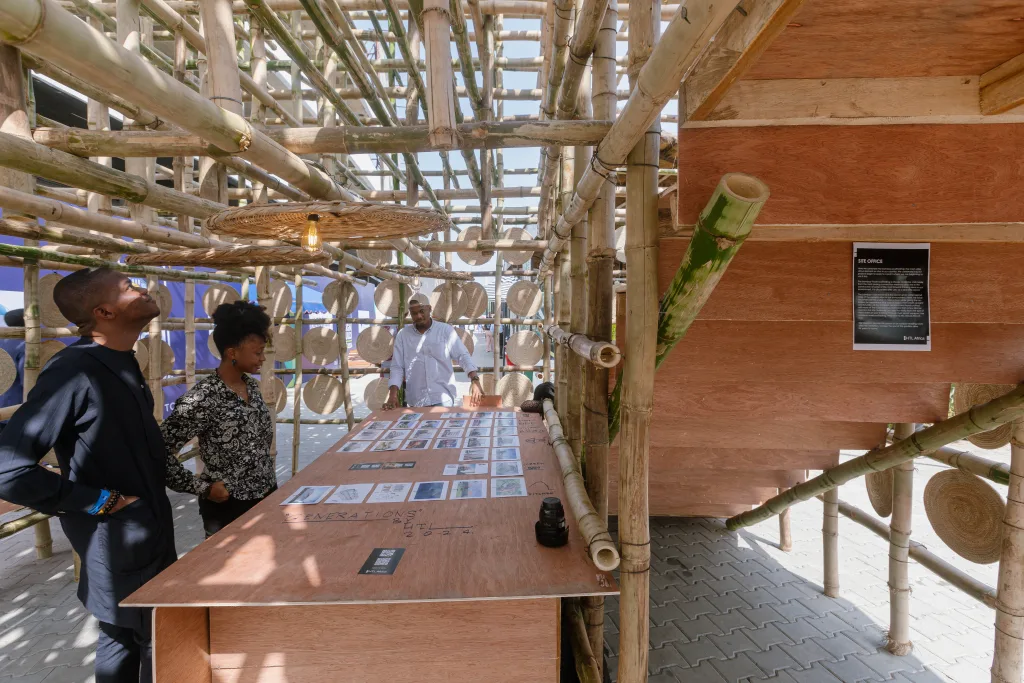
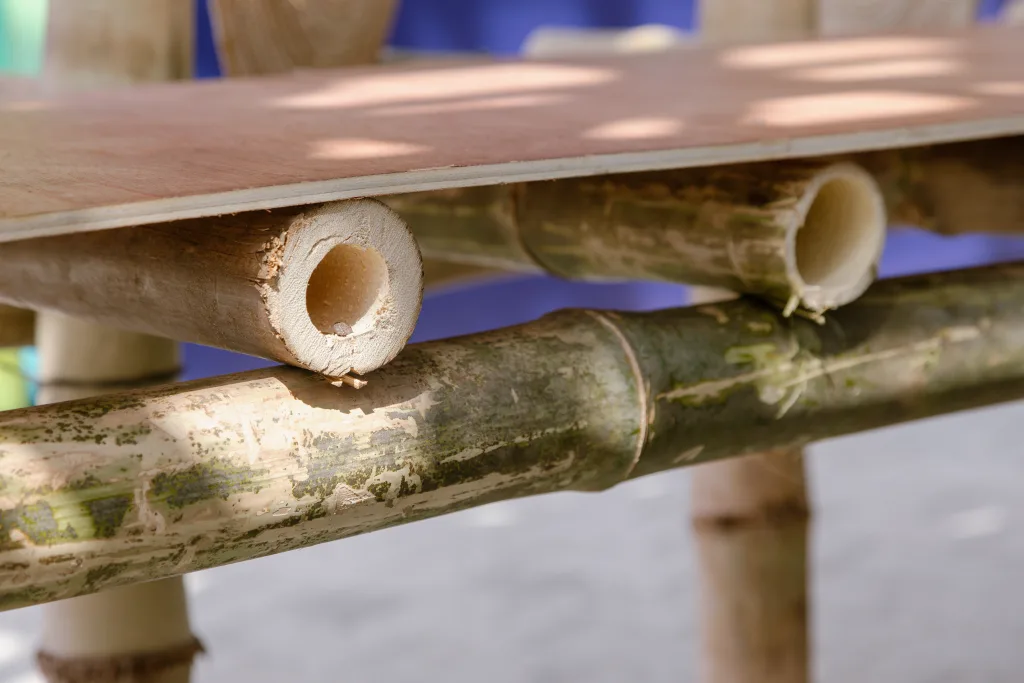
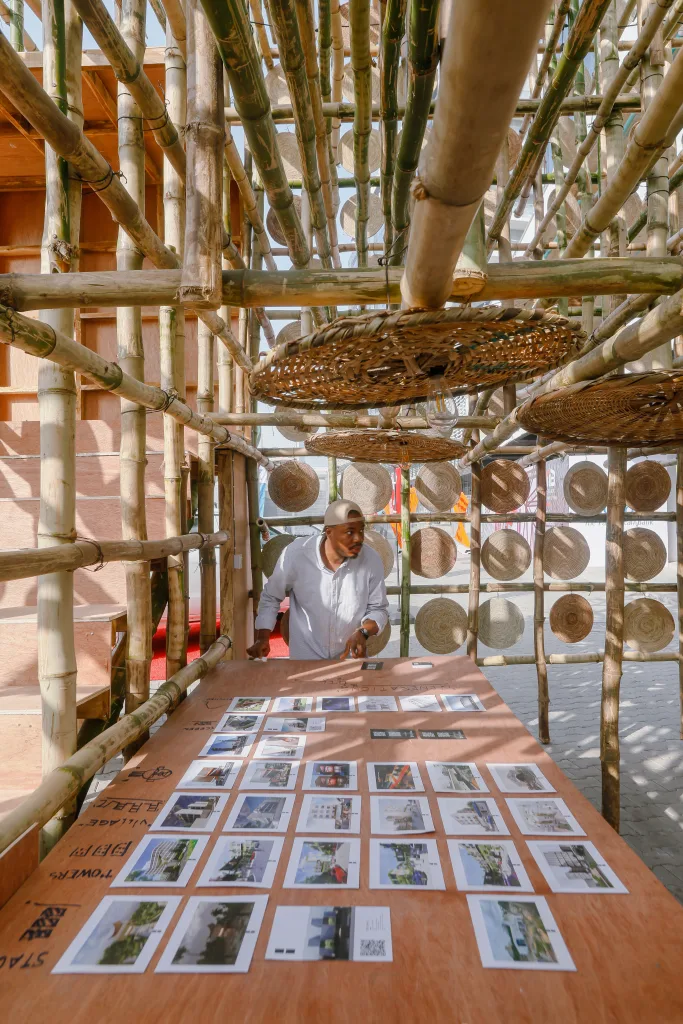
A.S: What challenges did you have in trying to build up this design and constructing it with bamboo?
J.G: When we first started, there was a lot of disbelief because there was a very tight timeline. Then there was also a lot of disbelief because we usually make very sophisticated objects.
When I paint, I paint very abstractly, so it has to be quite sophisticated. For us the firm, to leave behind the sophisticated objects for something humble to be transformed into something sophisticated was a big challenge. We would convince ourselves in the office daily before we started execution.
There was a little bit of stress in trying to name it. A great piece of art can be made as beautifully precisely, as technically brilliant as possible. But if it has no story behind it, it’s just a technical feat, it doesn’t touch the heart. The art has to touch your heart.
Finding a name and allowing that, allowing ourselves to be able to create a name for it that was related to our work, related to the work of the city, and also has an artistic kind of “oomph”.
A.S: How did you merge art and architectural precision into this project? As someone with a visually artistic background.
J.G: Again, we come from Africa, so it’s quite easy to see the artistic side of things. Even though our ancestors are very freer than their European counterparts at that time and therefore have a more artistic leaning to it.
Presently I’ve been working within the confines of earth tones, trying to understand adjacencies, translucencies, transparencies, and flow. I’m trying to find the art in everyday objects as they move through space, which is quite an abstract thing to even think about, that makes you see art in everything that you’re doing.
Architecture is a rigid professional, if not done well. The way to measure if architecture is good is if it transcends from being your run-of-the-mill shelter into something that can be discussed in a forum like this on the level of arts.
So we had to ask ourselves a few questions before we started executing the bamboo structure in an artistic way. In order for people to use it and experience what we experience on-site, that rough and readiness, but in an artistic fashion.
Then we start to ask ourselves, the square holes that are made by creating this three-dimensional grid. Which is called a voxel, that square grid, the quarter square grid that is made, we’ve scripted out some parts to add a staircase, an entry, and a big table and bench where people can communicate. If we are going to cover those holes, do we use a square mat or a triangular mat or a round mat?
Now, hanging the round mat instantly brings an idea of the round peg in a square hole, which then creates tension, and that tension is artistic. Suddenly, it becomes art. Trying to get that precise connection of the regular repetition of bamboo versus the imprecision of the locally crafted mats that we got from three or four local makers and then assembled it together. They were not standardized, they were not the same size, but they were in a range. Therefore it starts to become artistic because of that variant within the circle and the square. A pattern evolves and that pattern, there’s some freedom in the pattern.
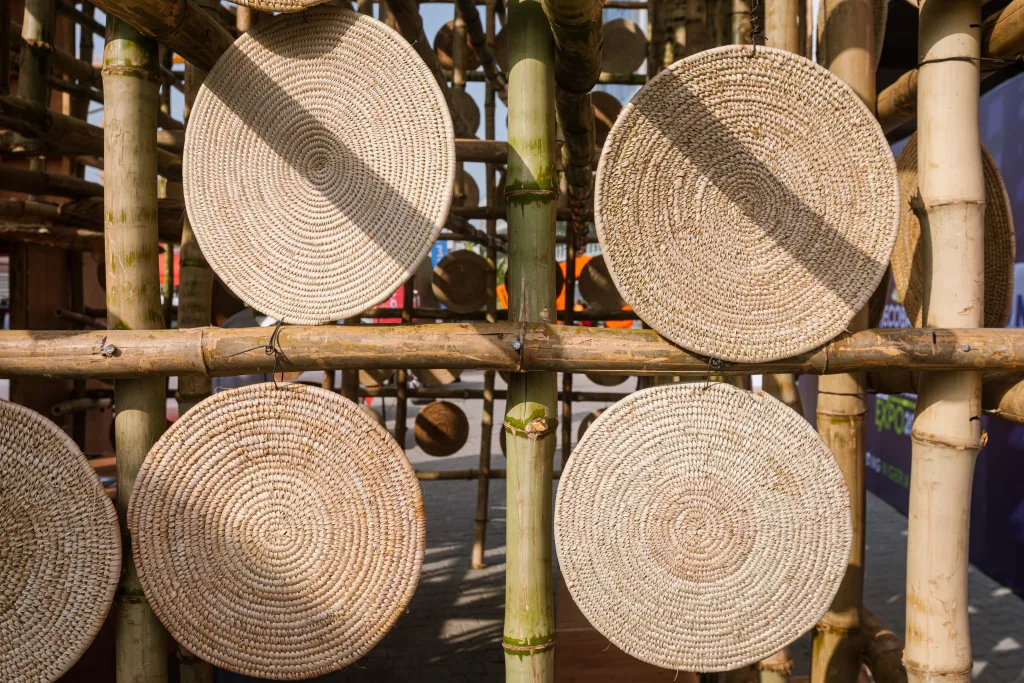
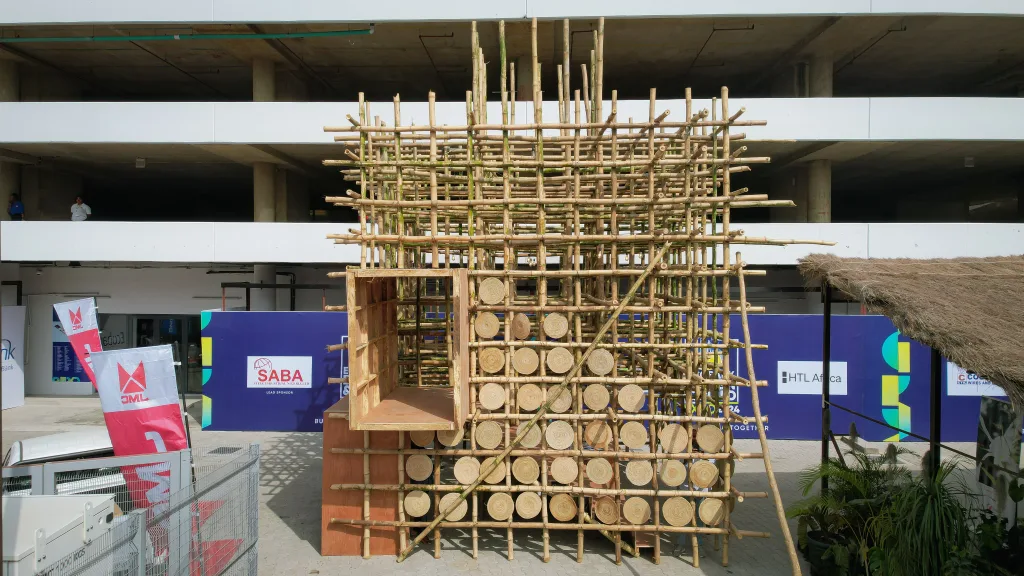
A.S: What would you hope that the visitors who saw it would take away from that experience?
J.G: We had wanted them to understand that this issue of sustainability, air flow, energy balance is not a difficult issue. We need to get these kinds of technical machines to solve the issue. Our ancestors had solved it in a very simple way. People were sitting in there when the sun was at its highest. It was cool inside it, and it was an open structure. If you step out, you feel the heat of the day. It was quite a trick that people didn’t understand and it had no roof. We’re able to use the bamboo as a continuous shading device that can be used as a screen around the house, a screen around the building, a big glass building, and it allows the sun to play patterns into the building and things like that.
People had a feel of what it’s like to make architecture, on a level that it becomes an environmental machine and helps to amplify the performance of an environment.
I think that people saw that. I know that there was a lot of goodwill after the exhibition and during the exhibition. The ex-president was very happy to have seen it and therefore, started a conversation with us. The banks themselves were pleased. A lot of people came and we had a barrage of photographs taken of it, which is quite insane because it’s a very small structure.
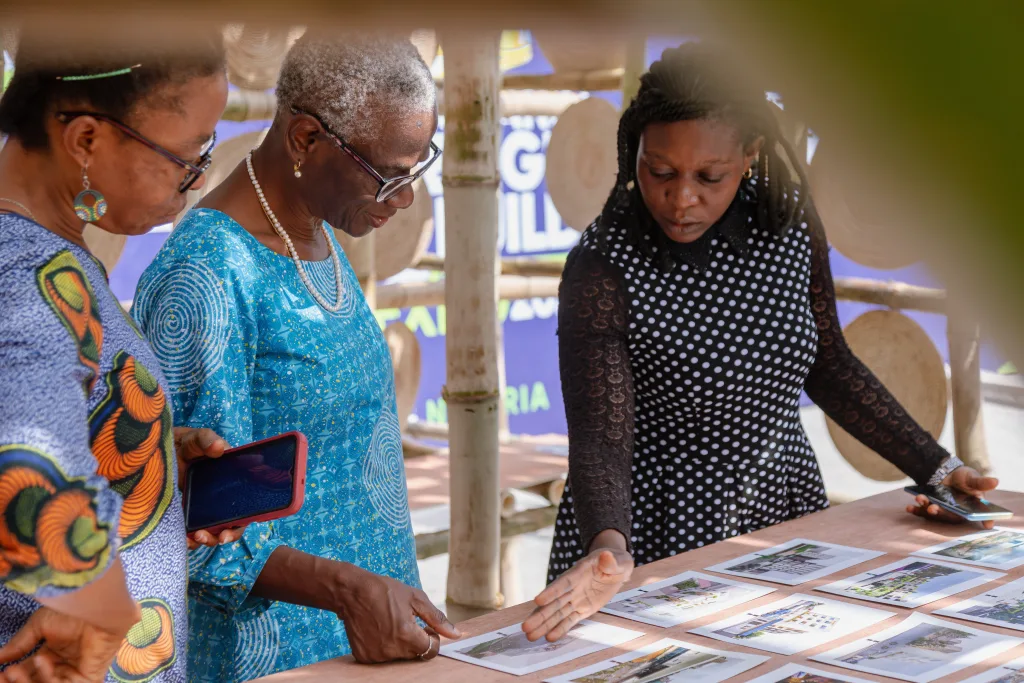
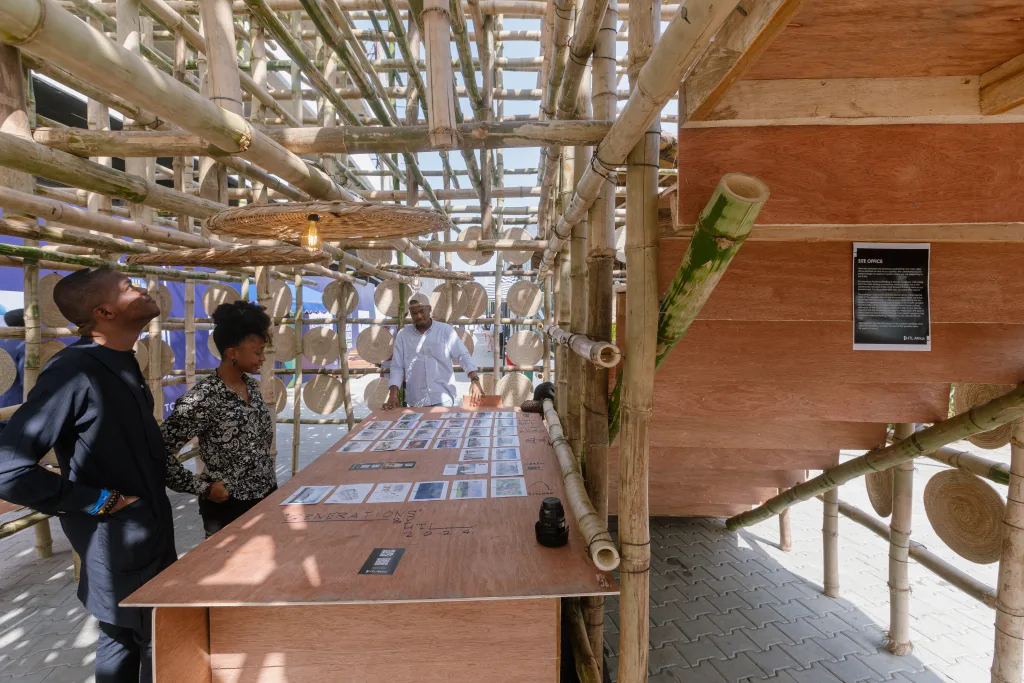
A.S: What do you think about the future of sustainable buildings and construction in Africa as a whole?
J.G: Sustainability has no manifesto. It’s difficult to project it into the future because it’s a reactionary thing. In the sense that we’re afraid that the world will end if we don’t do stuff. Instagram has a manifesto. Facebook has a manifesto. Sustainability should have a manifesto. What we see as the future of sustainability is to relax the pressure on it.
We’re working from a place of fear. When the colonizers, the colonizers came to us.You would, you would be surprised that they were also afraid of us. Therefore, everything in the architecture is made as a defense mechanism against the weather, the people and so on. A quick example is the roof. That throws away what’s far away from the building. It rains in Europe, but it doesn’t rain like Lagos in Europe. If you reverse it, in Benin, it rains worse than Lagos.
What they do is to throw the water into the courtyard and they catch the water and reuse it. That’s a sustainable practice. They didn’t have to go to Harvard to learn it. They’ve been doing it for a long, long time. Another thing is the sun. We’re melanated, so the sun works for us. In fact, I read a study somewhere, or I saw it somewhere, that the darker a skin tone is, the healthier a person is. We are made to receive from nature. In the architecture of the Hausa and desert sides of our country, where the architecture is amplified for outside living.
Things like this are pavilion and things like the architecture that we’re making. We’re trying to remove the machines and revert back to that outside living inside and the creation of environments within a free space where things can happen and that our rooms revert back to sleeping spaces.
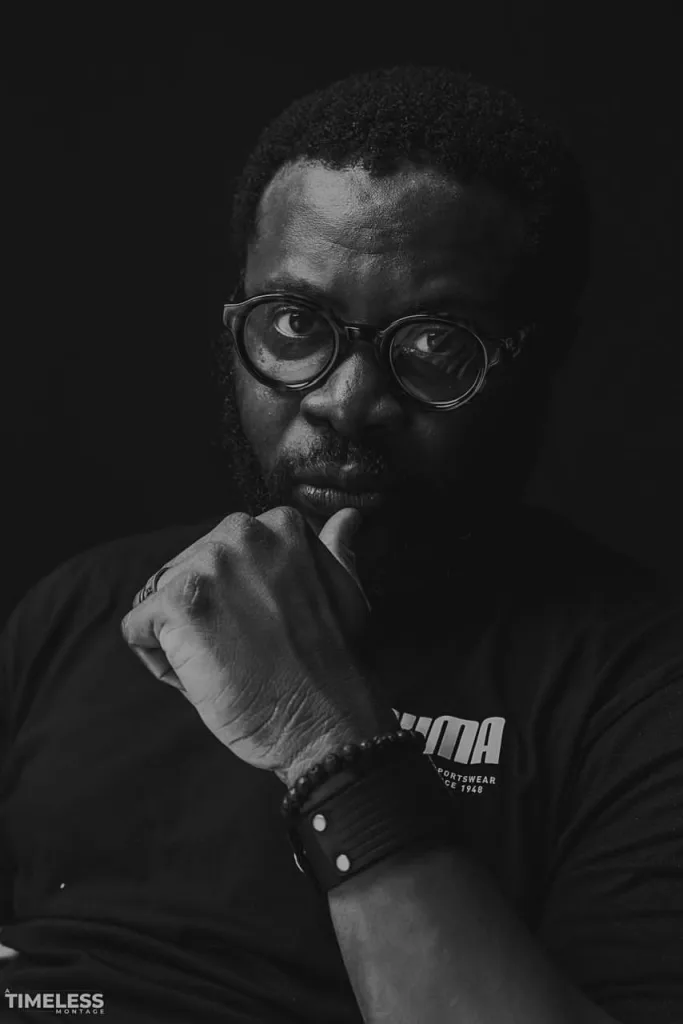
A.S: Do we get to see any more exhibitions like this from you this year? Any projects?
J.G: I might exhibit in Venice this year. If not, next year. Although we have a lot of projects that we’re working on in the office. We’re trying to spread the gospel around the world. So I’m trying to do a lecture tour around the world over the year. So between that, but if the opportunities show themselves, we might just work.
For more information, follow HTL Africa and James George on Instagram. Or visit their website, www.htlafrica.com


